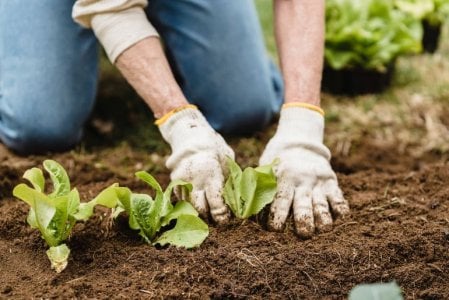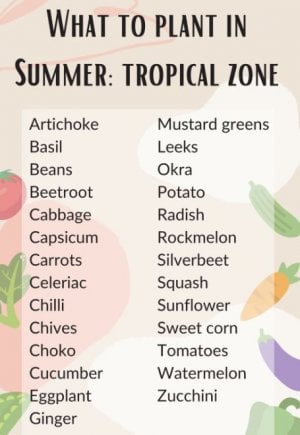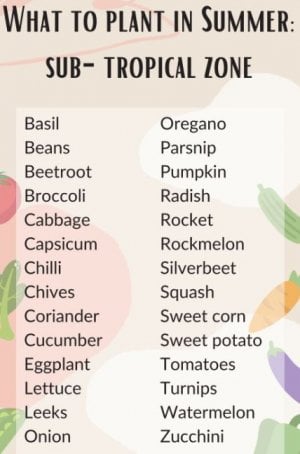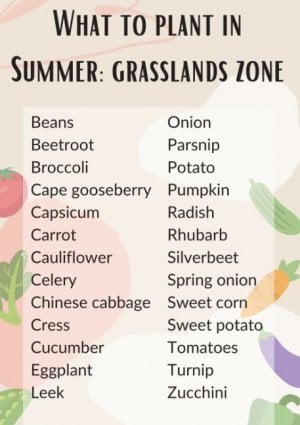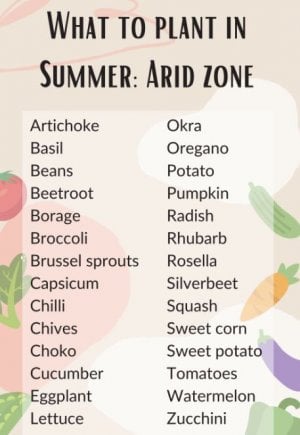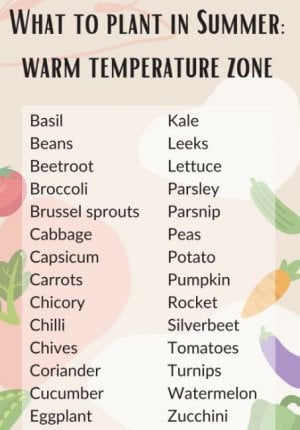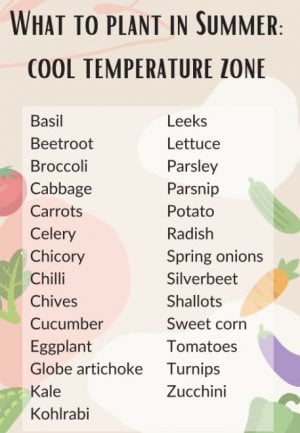Summer planting guide: What to grow in summer in Australia
- Replies 0
Food somehow always tastes better when you’ve grown the produce yourself. Not only is it more rewarding, but you also get to control how your food is grown, and you can make sure that everything you’re eating is always fresh.
If you’d like to grow more veggies in your garden or want a refresher on which produce grows during summer, we’ve got you covered.
Gardening expert Ingrid Devlin shared her summer planting guide that’s filled with tips to help you get the most out of your garden and grow the best produce possible.
‘It’s important to note that all of these plants can be grown either from seeds or seedlings,’ Ms Devlin wrote.
‘If you decide to grow from seeds, your seeds need to be started in a seed tray. Allow them to germinate by keeping them in a warm place with an ideal temperature of between 20°C to 30°C.’
‘Once the seeds have germinated, keep them in a warm, sunny position. Water them regularly and plant them in your garden after about 4 to 6 weeks,’ she continued.
The secret to a lush garden is knowing your climate zones. It’s also important to remember that what grows well in one area of the country may not suit another.
For members who live in the tropical zone, including the top east coastline of Australia (Mackay, Townsville, Cairns) and sweeps across the top end of the country (Darwin, Katherine) and goes right across the top end of the WA coastline (Broome down to Exmouth), you may refer to the image below to see which are the best things to plant in your zones:
For those living in sub-tropical regions (Coffs Harbour, through Brisbane, and up the coast to Rockhampton and Mackay), and the mid-WA coastline, the best things to plant in your zone are as follows:
In-land Aussie cities, such as Mount Isa, Tennant Creek, and stretching across to the WA coastline are what’s called the Grasslands zone. Although the summer season gets unbearably hot there, that doesn’t mean that there’s only a limited amount of produce you can grow in your garden.
You can find the best plants to grow in your zone here:
The arid climate zone – which is Australia’s biggest region – covers almost all the inland areas across all states. If you’re planning on diversifying your garden, here are the best plants to work with:
Next, if you live in a warm temperature zone, which generally speaking covers the New South Wales tablelands and the coastline from Sydney, all the way down to Melbourne. As well as across to Adelaide and Perth, and inland Queensland, here are the veggies you can grow in your garden:
Lastly, the cool temperature zone covers most of Tasmania, the mountain and inland areas of New South Wales, Victoria, and the tablelands of the ACT.
Despite the cold climate, you can still grow several types of produce in your garden, such as:

We hope you found this summer crop-growing guide useful! Let us know what you think about it in the comments below. Maybe you’ve found that you’ve managed to successfully grow many plants that aren’t supposed to be able to grow in your region! If you need new recipes to try with your self-grown food, you can browse through our recipe forum here.
If you’d like to grow more veggies in your garden or want a refresher on which produce grows during summer, we’ve got you covered.
Gardening expert Ingrid Devlin shared her summer planting guide that’s filled with tips to help you get the most out of your garden and grow the best produce possible.
‘It’s important to note that all of these plants can be grown either from seeds or seedlings,’ Ms Devlin wrote.
‘If you decide to grow from seeds, your seeds need to be started in a seed tray. Allow them to germinate by keeping them in a warm place with an ideal temperature of between 20°C to 30°C.’
‘Once the seeds have germinated, keep them in a warm, sunny position. Water them regularly and plant them in your garden after about 4 to 6 weeks,’ she continued.
The secret to a lush garden is knowing your climate zones. It’s also important to remember that what grows well in one area of the country may not suit another.
For members who live in the tropical zone, including the top east coastline of Australia (Mackay, Townsville, Cairns) and sweeps across the top end of the country (Darwin, Katherine) and goes right across the top end of the WA coastline (Broome down to Exmouth), you may refer to the image below to see which are the best things to plant in your zones:
For those living in sub-tropical regions (Coffs Harbour, through Brisbane, and up the coast to Rockhampton and Mackay), and the mid-WA coastline, the best things to plant in your zone are as follows:
In-land Aussie cities, such as Mount Isa, Tennant Creek, and stretching across to the WA coastline are what’s called the Grasslands zone. Although the summer season gets unbearably hot there, that doesn’t mean that there’s only a limited amount of produce you can grow in your garden.
You can find the best plants to grow in your zone here:
The arid climate zone – which is Australia’s biggest region – covers almost all the inland areas across all states. If you’re planning on diversifying your garden, here are the best plants to work with:
Next, if you live in a warm temperature zone, which generally speaking covers the New South Wales tablelands and the coastline from Sydney, all the way down to Melbourne. As well as across to Adelaide and Perth, and inland Queensland, here are the veggies you can grow in your garden:
Lastly, the cool temperature zone covers most of Tasmania, the mountain and inland areas of New South Wales, Victoria, and the tablelands of the ACT.
Despite the cold climate, you can still grow several types of produce in your garden, such as:
Key Takeaways
- Australia is a big, diverse place, so what grows well in one area may not necessarily do well in another.
- It is important to plant the right thing at the right time to get the most out of your garden.
- Some of the best things to grow in ANY climate zone in summer are: basils, beetroots, broccoli, capsicum, cabbages, cucumbers, chives, eggplants, potatoes, radishes, sweet corn, tomatoes, and zucchini.

